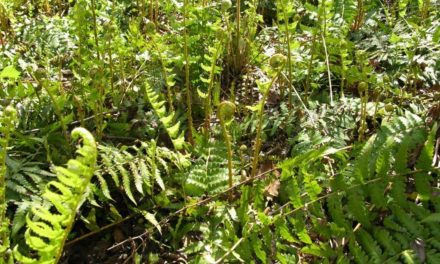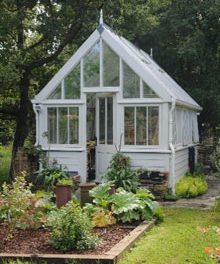Gardening in the shade is the delight of Southern gardeners. Because a mature garden is often a shady one, we are blessed with trees and large mature shrubs. There may be a part of the landscape that gets full sun – usually the south or west side of the house. The eastern and northern exposures will be in the shade in summer and winter; temperatures may be considerably cooler in these areas. In the site plan of any new landscaping you would want to know where North is. It is usually shown as an arrow. Looking at a landscape plan, the relationship of the buildings to the north arrow will help in the selection of the right plant for the right place.
Having cooler spots will affect the amount of water required and other gardening considerations may also be different. Plants that enjoy full sun in more northern climates will be happier in part sun or morning sun in the South Carolina Lowcountry. Many plants need 4-6 hours of sun to bloom, but let’s look at some plants that have interesting texture and leaf color to add variety to a shady spot in the garden.
Leaf size and texture are as important to a well landscaped yard as the mature size and form of the plant. Many of the tropicals that grow in our area have large leaves. The gingers, bananas, Fatsia, and elephant ears are distinctive and attractive because of the size of the leaves. These plants are striking, bold and desirable. They offer a contrast to the finer textured or smaller leaves of foundation and ornamental shrubs. I really like using ferns and spiky foliage to offset the larger coarser leaves of trees and shrubs.
Variegation and leaf color are another trick the shade gardener can use. When cream, white, dark or chartreuse leaves appear in contrast to medium green leaves, the plants are somewhat more appealing.
Beauty is in the eyes of the beholder; your favorite color, painting, dance or song may not find the same favor in others. Gardening is an art form. If it pleases you and your family and doesn’t break any of the rules of the Property Owners Association, it is a legitimate artistic expression. Like the furniture polish directions say, “Try it in a small area first.”
Focal points in any garden are key elements of a good design. The eye is drawn to the point of interest by use of rhythm, line and color. The line may be a walk way or path, the wall of a building, a fence, or hedge. There are plants like impatiens and begonias, bromeliads, orchids, and a few vines that flower in the shade. Unfortunately many of these, like the hostas, are also deer favorites.
Deer on our islands may eat artificial flowers and like them.
Cottage gardens, courtyards, roof gardens, decks and porches can substitute and hold the “Bambis” at bay. The yard may be left to the turf and mulch, and there are a few things that will look nice for you and your families. Also consider arbors and trellises to hold a morning glory or rose.
Many native plants are deer resistant, if the deer cooperate. That is another article.







